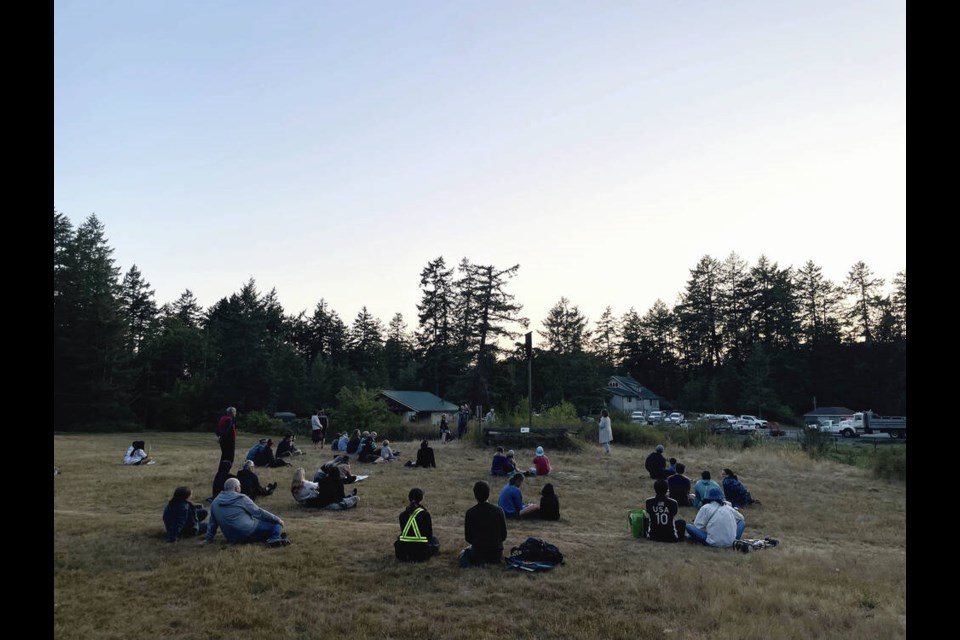If you care about bats — those insect- and mosquito-munching nocturnal flying mammals — a community group concerned about their well-being has a job for you.
The B.C. Community Bat Program is looking for citizen scientists to take part in the annual bat count at a series of roosting spots around the province, including the Capital Regional District, starting on June 1.
There are 15 species of bats in the province, including the endangered Little Brown Myotis and the at-risk Townsend’s big-eared bat found in the CRD. Several species are considered in danger of being hit by white-nose syndrome, a fungal disease that has killed more than six million bats in eastern Canada and parts of the U.S.
The fungus has been discovered in bat feces in Grand Forks, but not detected in bats as yet. Experts say it’s a matter of time.
Bats infected with the rapidly spreading white nose syndrome develop a white fungus on their nose and wing membranes during hibernation.
Roused from their winter sleep, the bat’s metabolic rate gets thrown out of whack, leading it to consume stores of winter fat trying to remove the fungus. It can also spread to the membrane of the bat’s wing, where it eats away at the skin tissue and hinders the ability to fly. If bats can’t fly, they can’t forage for food. Without enough calories, they risk starvation, freezing and often death.
The fungus was found in Alberta last year and has been in Washington state since 2016.
Last year, volunteers conducted 888 bat counts at 274 different maternity roost sites across the province. In the capital region, the bat count at 12 separate locations tallied about 1,600 bats.
Collecting the data is important to monitor the health of bat populations, said Juliana Laposa-Wilde, co-ordinator for the Southern Â鶹´«Ã½Ó³»Island Bat Program, part of the Habitat Acquisition Trust Foundation, which funds the counts in the region.
Laposa-Wilde said the counts help biologists track both the impacts and recovery of bat species. “If populations decline, it could indicate impacts from white-nose syndrome,” she said. “A large number of the roost sites we count house Little Brown Myotis and Yuma Myotis, both of which are susceptible to white-nose syndrome.”
Laposa-Wilde said four bat counts are usually done at every roost site — two in June to count the females and two more starting mid-July when the pups are learning to fly. Counts are done in buildings, under bridges or at bat boxes, purpose-built habitats that are scattered around the CRD in Colwood, Langford, Metchosin, Saanich Central Saanich and North Saanich.
Female bats roost together in summer and raise their young in maternity colonies, said Laposa-Wilde.
“They generally only have one pup per female in June,” she said. The males don’t help with raising the young and usually roost by themselves in large trees, rock cliffs, boulder fields or inside barns and buildings.
Laposa Wilde said bat counts involve volunteers sitting outside a bat maternity roost at sunset and, for an hour, counting all the bats that come out.
Bats play an important pest-control role and are thought to provide at least $3.7 billion in savings to the agriculture and forestry industries every year through their voracious consumption of crop-eating insects.
Studies for the province’s environment ministry say a lactating female bat can consume her own body weight or more in insects in one night. In a laboratory setting, a single little brown bat, which typically weighs about six grams, ate 600 mosquitoes in an hour.
Scientists say bats also play an important role in the movement of nitrogen, taking aquatic insects into forested areas by depositing their guano. They say bats are also alarm bells in ecosystems due to their sensitivity to pollution and pesticides.
Some people may prefer to exclude the bats from their buildings, but it is illegal to exterminate or harm bats under the B.C. Wildlife Act, and exclusion should only be done in the fall and winter after it is determined that the bats are no longer in the building.
Members of the public can report a bat colony or sign up to help with bat counts at , [email protected], or by calling 250-995-2428.



